The USD 250,- daily fee foreign visitors must pay makes Bhutan one of the most expensive destinations. In return, once a traveler survives landing at one of the most dangerous airports of the world, he is likely to have an outstanding experience. I visited Bhutan, a country inhabited by happy people, a country where traditions and nature are preserved, a country where a king himself initiated the change for democracy.
Bhutan, in their native language ’Druk Jul’, the ‘Land of the Thunder Dragon’, is the last kingdom of traditional Buddhism in the Himalayas. Ladakh lost its independence in 1842 then consequently it was attached to India. Tibet was invaded by the Chinese in 1950, while the Kingdom of Sikkim was formally merged with India in 1975. About half the size of Hungary, Bhutan is hidden among the snow-capped peaks between India and China. Ancient monasteries, colorful, painted buildings and, taking up three quarters of the overall territory, untouched forests form its picturesque landscape. No wonder, many believe it to be the land of peace, the last ‘Shangri-La’.
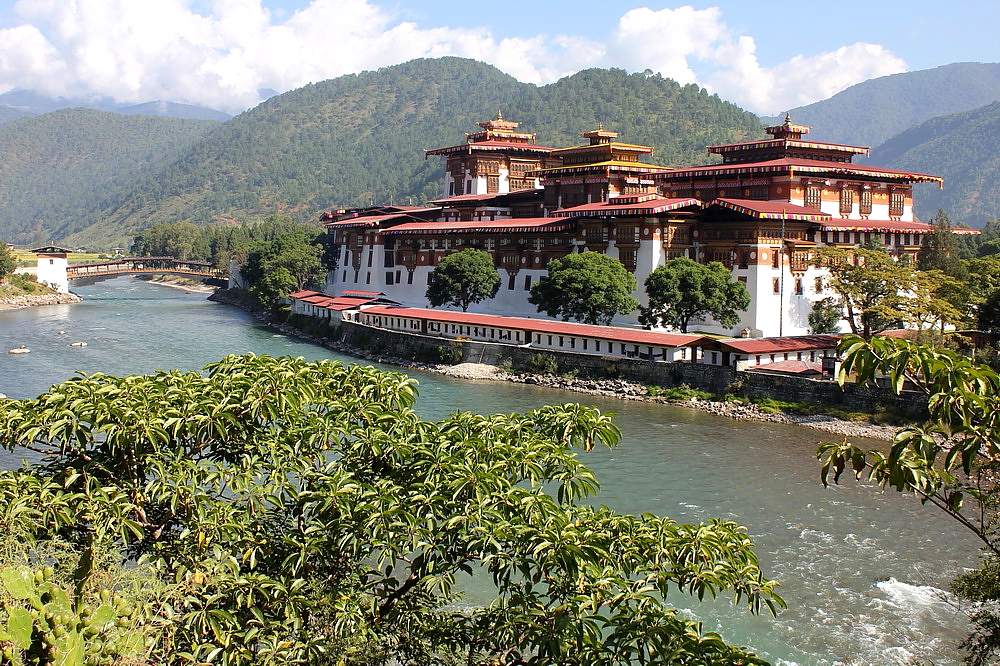
Transition from the medieval times to the 3rd millennium
This vulnerable country striving to maintain its independence took on a challenging experiment: a transition from the medieval times to the 3rd millennium while sticking to its traditional inheritance along the way. A tiny state, lacking considerable economic power and military force, believes its unique culture to be the key to preserving its identity. For more than a thousand years this nation has been completely isolated, both geographically and due to its political approach. Until the 1960s, there had been no constructed roads, electronic and telephone network, postal service or vehicles. Even these days, taking the one and only highway, it takes up to 3 days to get to the Western end of the country from the Eastern one, although the distance is no more than 250 air kilometers.
Five kings shaped the modern history of the country. In 1972, the fourth king, Jigme Sinye Wangchuck inherited the reign of an underdeveloped country with one of the worst outlooks in the world, inflicted by poverty, illiteracy and a high rate of neonatal mortality. 70 percent of the population still lives in tiny villages in the countryside, several hours walk away from the nearest motorway.
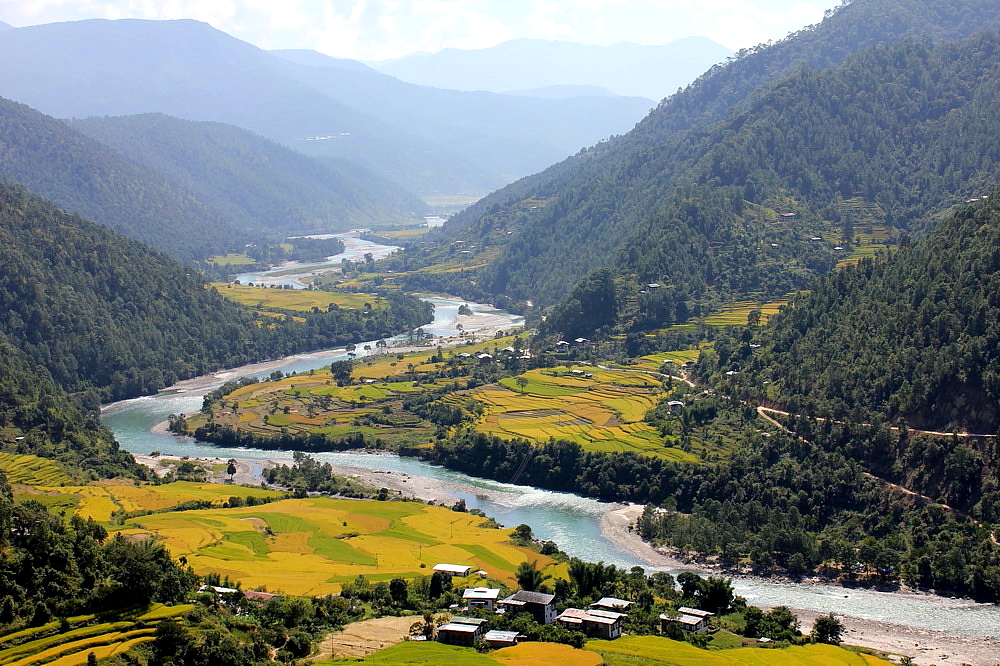
Where is happiness rooted?
The king set into motion the modernization of the country, but aimed to preserve its ancient values at the same time. He replaced the well-known indicator of the Gross Domestic Product (GDP) applied worldwide with ‘Gross National Happiness’ (GNH). The four pillars of GNH philosophy are: sustainable development, environmental protection, the perseverance of culture and responsible governance. Each modernization project and new legislation needs to be approved by the Gross National Happiness Committee. Whenever they find a development is threatening the equilibrium of religious values, environmental protection, family, etc., it is either cancelled or amended.
Eric Weiner in his book, ’The Geography of Bliss’, appropriately compares the measurement of GDP to the measurement of calorie intake where the source of those calories is completely disregarded. Though it clearly makes a huge difference from our digestion point of view whether our nutrition source is whole-wheat grain, pig fat or rat poison. ‘GDP doesn’t register (…) the beauty of our poetry or the strength of our marriages, or the intelligence of our public debate. GDP measures everything (…) except that which makes life worthwhile.’ – he says. By the introduction of Gross National Happiness, the Bhutanese realized that wealth could have a limiting impact on the human soul. They wish more people realized the importance of setting healthy boundaries and being conscious about how much is enough.
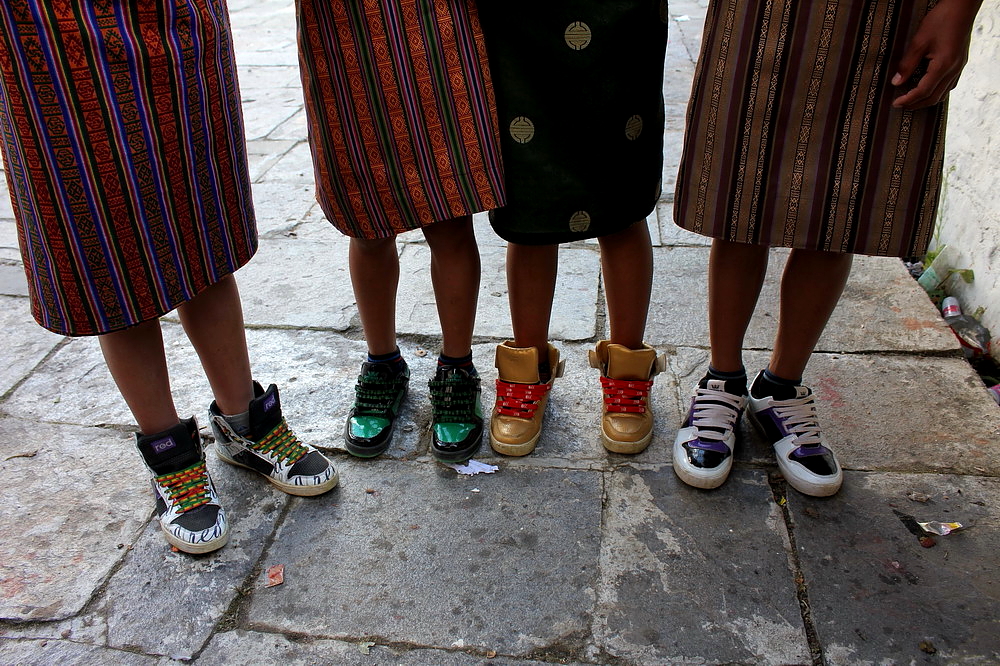
Bhutan is the 8th happiest of all nations
And these are not just words. The survey of the University of Leicester from 2006 ranked Bhutan the 8th happiest of all nations which we found completely in line with our own experience. Not a single person was caught complaining or lamenting throughout our discovery of the country. The Bhutanese appreciate what they have instead of looking at what they don’t. They honor and trust their king, and have a firm belief that their governance is striving to improve their country.
Before anyone assumes this all comes down to their lack of knowledge and understanding of Western economies, that’s not quite the case. First of all, households are equipped with TV and internet even in the smallest villages so they can get easily acquainted with how we live on the more prosperous side of the world. Then, as Bhutan has limited number of universities, students are often offered a scholarship by the state to obtain their college or university degrees in Western institutions. Still, they all choose to return home after the completion of their studies. Somehow, they find their own culture and circumstances, often seen as modest in our eyes, more appealing even after witnessing the western world.
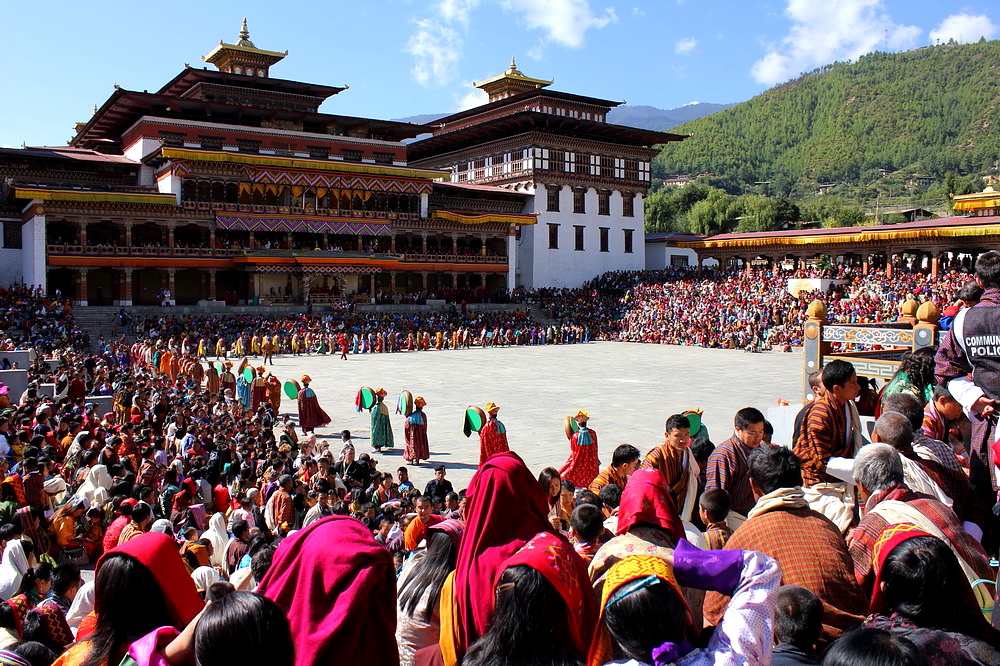
A country with no track record in crime
In every discussion I had, someone mentioned how peaceful it was to live in a country with no track record in crime. Public safety is indeed outstanding, we haven’t had a moment of concern about our personal belongings. Lonely Planet’s tour guide lists as much as 4 items in their section highlighting the dangers of Bhutan when normally the same section for other countries goes on for pages:
- Dogs – may ’turn into barking monsters at night’ (by Lonely Planet);
- Carsickness – contributed to the twists & turns of hillside roads;
- Altitude;
- Weather conditions.
The centuries of isolation, the low density of its population, the earlier inaccessibility of its location and its tradition to respect and conserve the environment left Bhutan’s landscape a perfect scene of nature at its best: a ‘display’ of otherworldly flora and fauna. Conservation laws stipulate that at least 60 percent of the country shall be covered by untouched forests; currently this rate is 72 percent. Traditions play a significant role in their architecture too, the same unique characteristics are applied during the construction of each building, from a newly built bank’s premises to a petrol station. Churches and fortresses are built without drawing up blueprints, under the directions of an inspired lama.
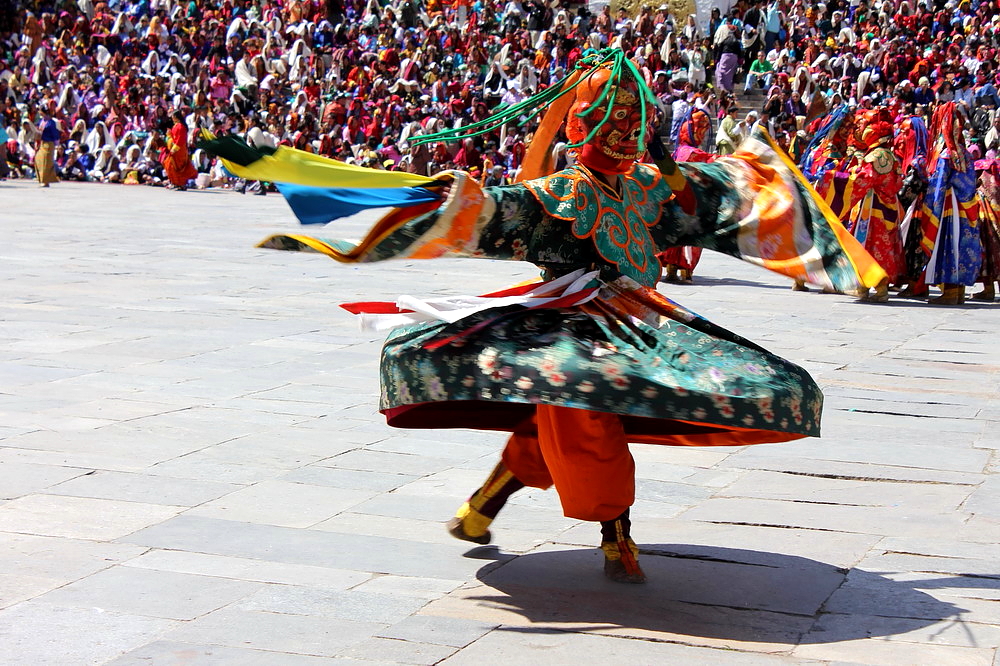
Foodball cup led to TV
It may sound surprising, but television was banned till 1999. Ever since broadcasting has been limited: certain worldwide channels (such as Fashion TV) or any programming associated with violent content are not available. Their interest in the 1998 football world cup left the Bhutanese with an increased demand for cable television which led the king to erect a giant screen in the capital’s stadium. A year later, on the 25th anniversary of his enthronement, he approved the nationwide installation of the television network. The 1998 football upheaval was brought to screen by Bhutan’s first and so far one and only internationally acknowledged director, Khyentse Norbu, in his movie ‘The Cup’. ‘The Cup’ was nominated for an Oscar in the foreign movies category in 2000.
Mobile network availability is sporadic. As there is no roaming agreement in place with a Hungarian supplier, I was unable to use my mobile anyway. However, internet was introduced in 2003 without any limitation, and surprisingly high download speed is ensured too.
As a result of the king’s initiatives Bhutan embarked on a path of rapid growth: from 10 percent in 1982, the ratio of literate population increased to 60 percent by 2008. Once education was only available in monasteries, but now each county has a school and exceptional students are entitled to a state scholarship. Many pursue studies in India, the best ones make it even to the UK. Life expectancy of the population has increased from 43 to 66 years and the neonatal mortality rate has dropped from 163 to 40 per thousand.
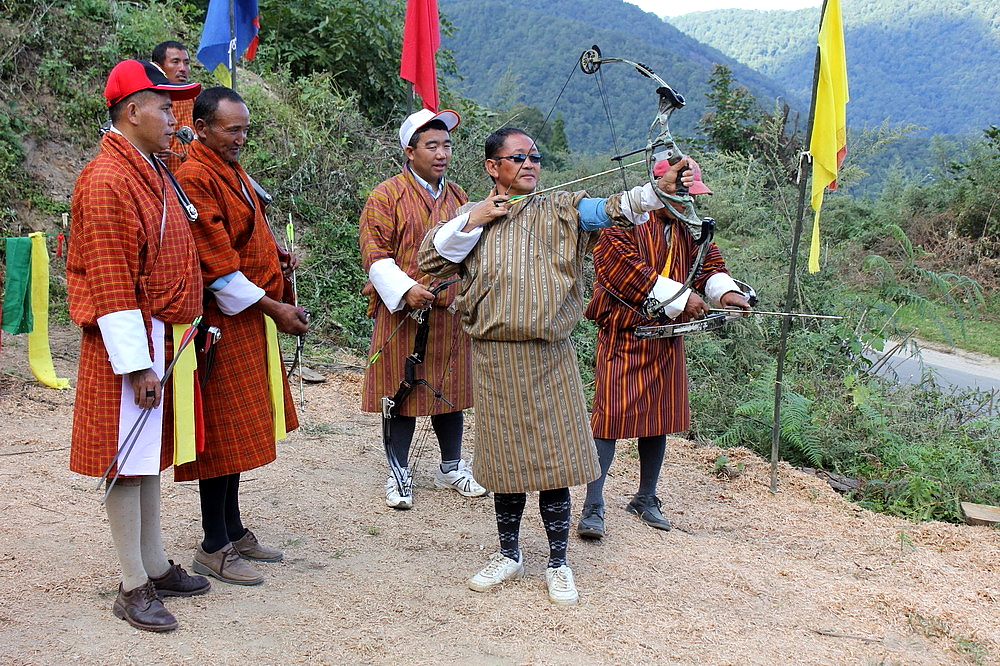
The king opted for democracy, his nation didn’t
The most surprising turn of modernization was the introduction of democracy, initiated by the king himself. The popular monarch, Jigme Sinye Wangchuck announced his abdication by own initiative in favor of his son, Jigme Khesar Namgyel Wangchuck, in 2006. The fifth king reigning up to the present day inherited a political system changed from absolute to constitutional monarchy. The first democratic government of the country was formed as a result of parliamentary elections, unusually, much to the Bhutanese people’s opposition. They had greatly honored their king: they believed it was a noble act from him to invest his assets in establishing schools and constructing roads instead of building royal halls or realizing any of his own ideas. They associated chaos with democracy, as they had seen in their neighboring countries India and Nepal. The king however insisted on eliminating the absolute nature of the monarchy in order to prevent the nation from any future evil or incompetent king.
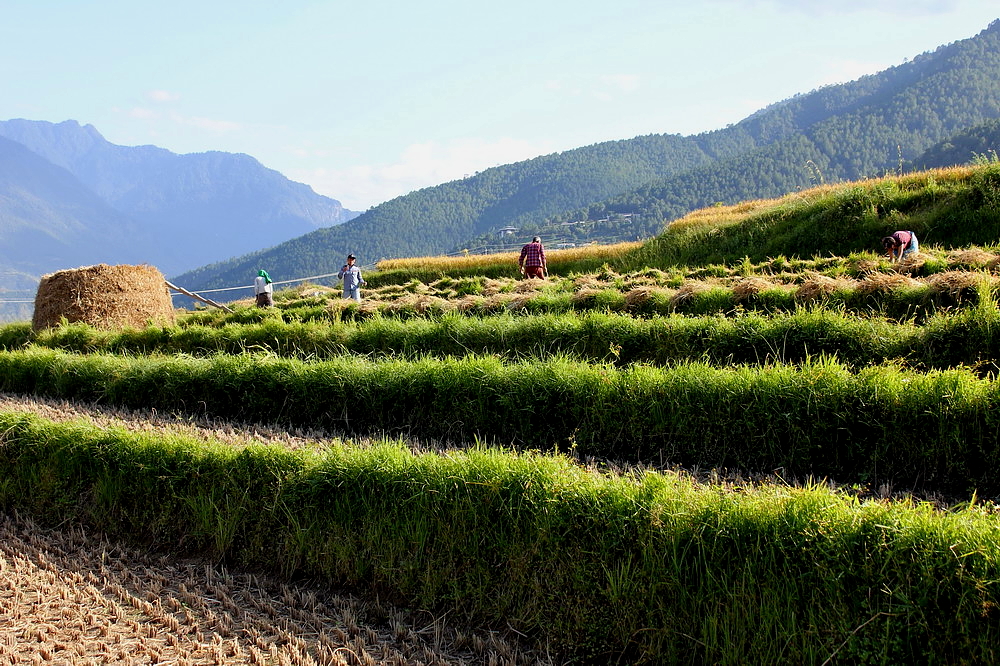
Roadshow
Facing his people’s objection, the king decided to visit all 20 districts of the country – many of which could only be approached by foot or on horseback. He introduced the concept of democracy, its mechanism and its advantages to the local representatives and inhabitants, one by one. Following this literally face-to-face national consultation, the first parliamentary elections took place. Nowadays the king has no formal power, however just like his father, the reigning monarch has also become so popular that all of his recommendations are being accepted.
| Even Bhutan seems to have one disgrace: the status of Nepalese. The Hindu Nepalese minority accounts for up to one fourth of the country’s population. The king first attempted to hinder the increasing immigrant wave from Nepal by introducing legislation to restrict residence and citizenship, then later on strict Buddhist dress code was made mandatory for Hindus too. Many of them retreated to refugee camps without any resolution of their case up to this date. |
If the otherworldly landscape, the traditions of centuries or the unusual modernization attempts are not enough, well, the list of peculiarities goes on. There’s a national dress for men called ‘gho’, which they are obliged to wear while visiting public institutions or government offices, churches and schools. The color of the monks’ teeth turning to red by the constant chewing of betel-nuts matches perfectly the shade of their red attire. Drukpa Kunley, also known as the Madman of the Dragon Lineage in the 15th century, is a highly-esteemed figure in Bhutan. He is credited with fighting demons, awakening unenlightened young ladies with his “Thunderbolt of Flaming Wisdom” (his penis). He is responsible for introducing the tradition of colorful, giant phallus paintings on buildings to drive away evil spirits.
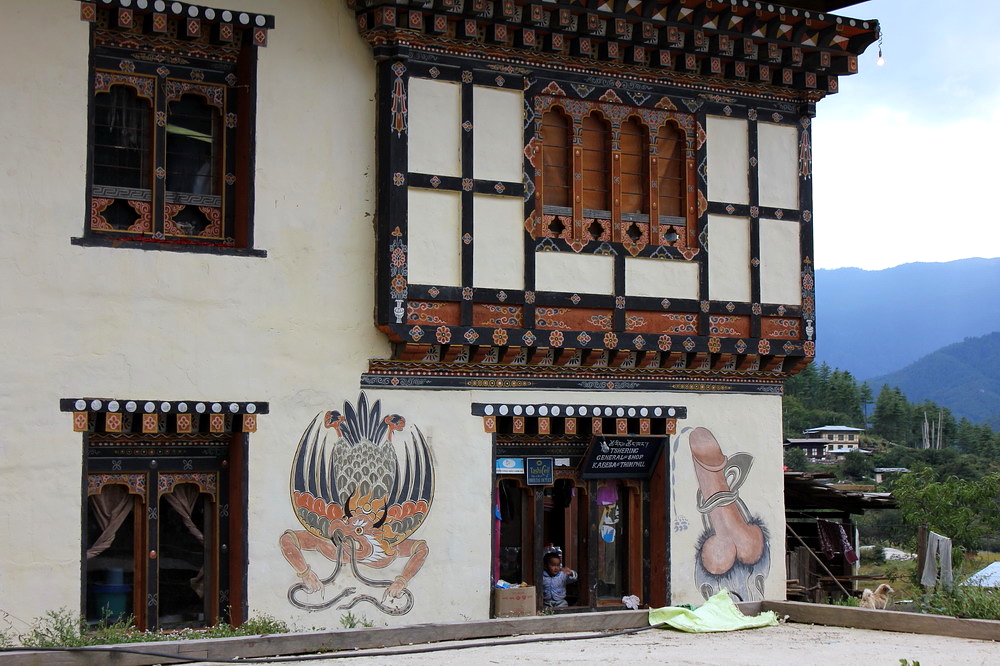
Only a few tourists make it there
Tourism is increasingly important, though the USD 200 tax (increased to USD 250 as of 1 January 2012,) foreigners are charged daily has kept the backpacker masses – overrunning Nepal in the meantime – out of the country. The levied tax makes Bhutan one of the most expensive destinations on the globe, but their environment and traditions are much less affected as long as the number of visitors remain low. The number of tourists is not limited in any other administrative way. The high entrance tax itself has a significant limiting impact even though it is supposed to be an ‘all-inclusive’ pricing covering accommodation, programs, tourist guide, hiking guide, luggage porters, etc.
For those travelling on their own there is a USD 40 daily surcharge and their complete schedule for their stay has to be pre-planned and booked with a Bhutanese travel agency in advance. The traveler is free to choose any program he likes, from mountain climbing to rafting, and he’ll also be provided with the necessary equipment. It is important to note that once a trip is scheduled, updates or spontaneous ideas are not an option: accommodation, guides, programs are all booked in advance in an infrastructure where resources are scarce, leaving no room for a change of plan.
Natural barriers
In addition to the entrance fee, there are some other barriers to travel to Bhutan. The first tourists were allowed to enter the country in 1974, the first flight took off in 1983. Exclusively the 8 specifically trained pilots of Druk Air are allowed to land at the only airport in the country, located in Paro. Landings and take-offs cannot be carried out in poor visibility. Pilots must apply visual flight rules, that is, they must be able to see the short runway and the surrounding hills before take-off. This makes Paro’s airport runway one of the world’s top 10 challenging ones, though the scheduled flight between Kathmandu and Paro provides the most astonishing view on the Himalayas. From the 278 visitors in the first year, in 1974, the number of foreign travelers has risen up to 40 thousand by 2010. As a quick comparison: Nepal has half a million visitors annually.
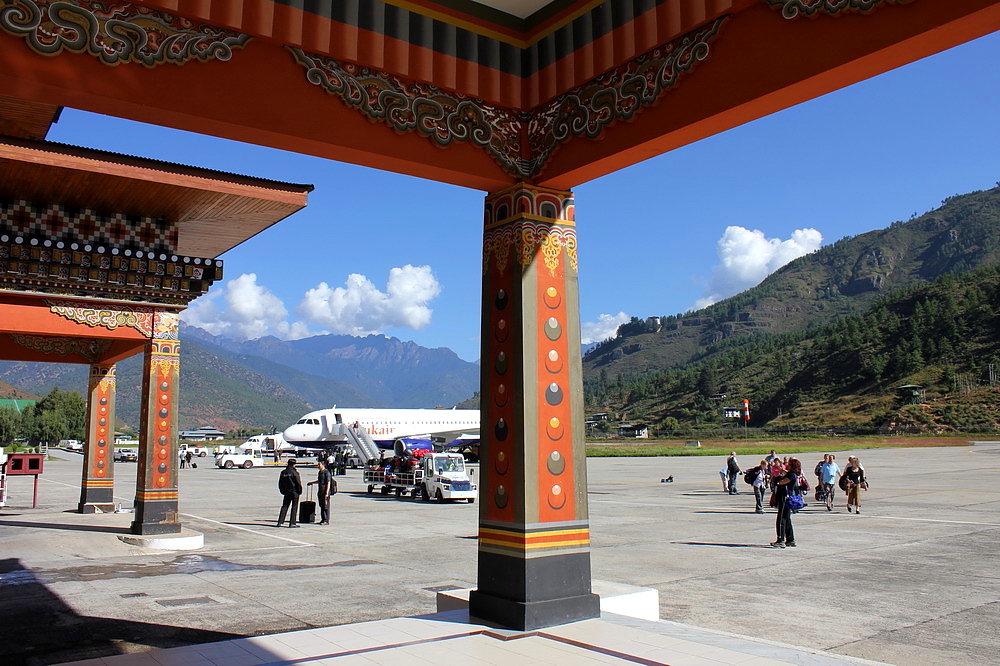
So how can one spend his time in Bhutan? The best way to discover the country is by hiking. We’ve climbed from mountain to mountain, walked from village to village, visited several monasteries, ancient halls, traditional hamlets. The festivals organized by each monastery once every year can be the highlight of a Bhutanese journey. We joined the most spectacular one, the Thimpu monastery festival, in the capital. Watch out for more on this and other stages of our tour in the next part.

